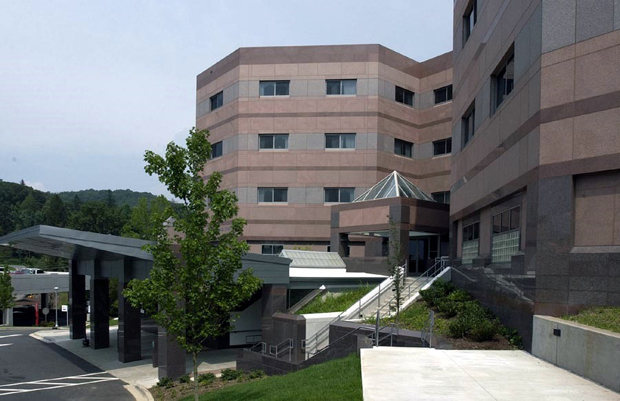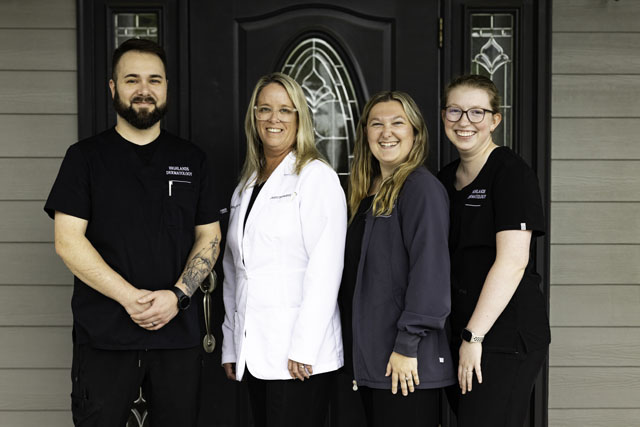Honor Thine Heart
25 Jan 2020
When it comes to cardiovascular health, prevention is the ultimate form of self-love
By SYBIL FIX

Ask Dr. Terry Kersey how he feels about the state of the heart, as he sees it from his chair as a cardiovascular disease specialist, and you will hear a sardonic sound that encompasses disappointment, concern, and a bitter tinge of realism. No, he says, things are not getting better.
“The population is getting heavier … for the first time in a long time our life expectancy is going down… No, it’s not getting better or healthier,” said Kersey, who has practiced cardiac medicine in North Carolina, in Rutherford County, for more than 20 years. “As we have fallen off our diets and activity scales, the average person I see is 30 pounds overweight, I see more high blood pressure, higher cholesterol, etcetera.”
He sighs. On the eve of American Heart Month (in February), a national effort to publicize the risks of heart disease, the state of affairs is sobering, particularly in rural places where the population is medically underserved, but in America overall: people are plugged to work and computers and Netflix, they’re stressed out, gaining weight, and the heart is suffering.
“In this country, one in three of us will have problems with our heart some time or the other over the course of our lifetime,” Kersey said. “I am a big believer in lifestyle medicine. People have to make a commitment to themselves and their health.”
No Good News
Cardiovascular disease (a range of diseases that affects the heart and/or the vascular system) is the leading cause of death in the United States, and the leading killer of women, claiming more lives than all forms of cancer combined. Heart failure is the leading cause of hospitalization in people over 65. More than one in three women live with some kind of cardiovascular disease.
Among the diseases of the heart, coronary heart disease is the most common, affecting some 20 million people in the US and killing 365,914 people in 2017 (out of the more than 840,000 killed by cardiovascular disease overall), according to the Centers for Disease Control and Prevention. Stroke is the second; high blood pressure the third.
Each year, more than 800,000 Americans have a heart attack. Worse, perhaps, from 2016 to 2017, age-adjusted death rates for stroke increased by 0.8 percent (while death rates for cancer decreased 2.1 percent).
In the southeastern United States, some two thirds of adults have high blood pressure. Not surprisingly, the southeastern United States has some of the highest heart disease death rates. In Rutherford County, Kersey’s county, the 2014-2016 cardiovascular disease death rate per 100,000 for all races age 35 and older is 548.3 (white, 542.2; African-American, 615.9), compared to the North Carolina average of 421.7 and the national average of 426.2. (Those same death rate figures per 100,000 are the following for surrounding counties: Buncombe, 371.0 for all races, 364.7 for white, 579.1 for African-Americans; Jackson, 373.3 for all races, 371.6 for white, 427.1 for African-Americans; Macon, 398 for all races, 406.4 for white, 482.4 for African-Americans; Transylvania, 336 for all races, 329.5 for white, 533.5 for African-Americans.)
However you look at them, the numbers are dismal, particularly if you are African-American.
Risk Factors
What puts us at risk for this? High blood pressure, high cholesterol, and smoking. And half of all Americans have at least one of these three risk factors. Several other medical conditions and lifestyle choices can also put people at a higher risk for heart disease, including diabetes, being overweight, eating unhealthfully, lack of exercise, and drinking too much. Lifestyle.
It is true that, to counter all that, medicine continues to do its good work, improving the quality and choice of stents, valves, and treatments. Medication alone, particularly to control cholesterol and the effects of having a sick heart that has to work twice as hard and is still inefficient, have greatly improved, Kersey said.
But, bottom line, he said, caring for our heart must begin sooner and be our top priority.
In his Asheville Cardiology Associates practice in the Rutherfordton area, and working at Mission Memorial Hospital in Asheville and the Rutherford Regional Medical Center, Kersey sees about one hundred patients a week in outpatient settings, plus he supervises stress testing and sees patients in the hospitals. Seventy percent of all of his patients are already being treated for some form of heart disease, but 30 percent of his patients are still in the clear (or asymptomatic, at least). For those, and for all of us who do not have heart disease yet, given the statistics, prevention is the ticket to staying healthy and alive.
Kersey became a cardiologist after seeing his father struggle with heart disease while he was a boy growing up in Greensboro. “We had a ranch house, and he couldn’t walk from the front of the house to the back of the house without becoming short of breath,” Kersey said of his father. He ended up having a bypass at age 40, and through various medications and treatments, recovering his health and quality of life.
But the care his father received—and that ultimately saved his life—inspired Kersey to attend East Carolina University School of Medicine and become a cardiologist.
“I decided that that’s what I wanted to do. That I could help people,” Kersey said.
The options, treatments, and technologies that he has available now to treat his patients are miraculous by comparison to those available to doctors fifty or even twenty years ago—at least in areas where the population is properly served. Nonetheless, he said, “if we can prevent the disease, that would be our goal.”
Stay Healthy
What can we do to help our body help our heart, the magic little pump that miraculously keeps us alive?
It is a simple check list:
Stay on top of your blood pressure, and if you have diabetes and a history of heart disease in your family, stay doubly on top of it.
Also, make a point of getting bloodwork done once a year. It is important to know whether we have high cholesterol in order to attack it as soon as possible with diet, exercise, and, if needed, medication. Rightly, Kersey said, guidelines are becoming more aggressive in terms of optimal cholesterol levels and even blood pressure, and we should follow them.
If you are near or over 50, if you have high blood pressure, a family history of heart disease or any other risk factors, get a stress test and an EKG. Know your heart, Kersey said.
If blood analyses and family history warrant it, Kersey recommends that asymptomatic patients who could reasonably develop heart disease have their arteries scanned for calcium deposits. Coronary Artery Calcium Scoring, as it is called, is a reliable measurement of the presence of calcium in the arteries, which is a marker of the presence of plaque, which builds up and hardens or blocks the arteries.
“That might result in taking early measures to improve a patient’s diet or exercise or putting them on medication,” Kersey said.
The P Word
Besides that, Kersey said, stay at your optimal weight; cut down on fatty foods and animal foods and eat more fruits and veggies; exercise reasonably; don’t smoke, and drink in moderation.
“If I can get someone to change their diet and exercise… I see patients drop their cholesterol by 30 percent,” Kersey said. “Overall, medicine tells us that the things that really work are the same ones we are not doing.”
Kersey said it takes only three weeks of steadfastness to turn a new exercise or healthy diet routine into a great habit. “If I can get them over the hump, they start feeling better and hopefully we get them to that habit stage.”
Does he ever tire of repeating it? No, not if it saves lives.
“You just have to keep saying it,” he said.
Love your heart!













